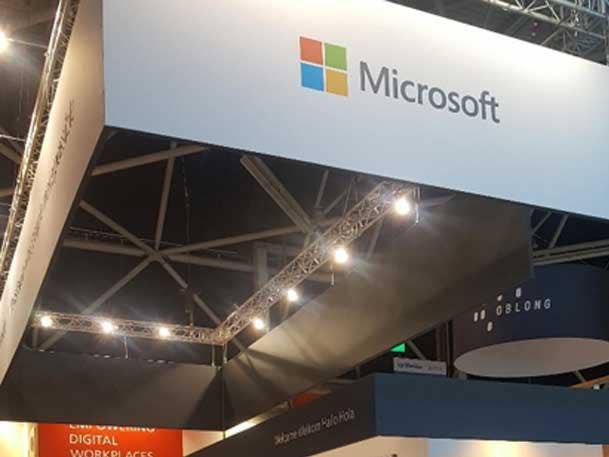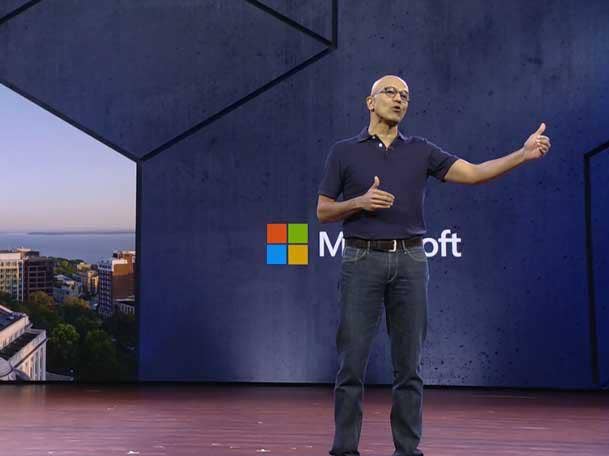Microsoft Layoffs Ahead Of Q2 Earnings: 5 Things To Know
‘As we saw customers accelerate their digital spend during the pandemic, we’re now seeing them optimize their digital spend to do more with less,’ Microsoft CEO Satya Nadella says.

Microsoft is feeling pain from growth deceleration coming off high demand for remote working and digital transformation tools during the pandemic – but whether the pain is from economic factors outside Microsoft’s control or a maturation of its products is what partners and investors will watch during the company’s second fiscal quarter earnings call scheduled for next Tuesday.
The Redmond, Wash.-based tech giant confirmed the upcoming layoff of about 10,000 employees, less than 5 percent of its 221,000 worldwide employee headcount.
CEO Satya Nadella has placed the blame on hiring to keep up with demand during the pandemic that has now diminished.
“As we saw customers accelerate their digital spend during the pandemic, we’re now seeing them optimize their digital spend to do more with less,” Nadella said. “We’re also seeing organizations in every industry and geography exercise caution as some parts of the world are in a recession and other parts are anticipating one.”
[RELATED: Satya Nadella Confirms 10,000 Microsoft Layoffs]
Microsoft Announces Layoffs, $1.2 Billion Hit
Nadella also promised to keep investing in innovation and that he expects “Microsoft will emerge from this stronger and more competitive.”
CRN has reached out to Microsoft for comment about the effect of the layoffs on its partner organization.
Microsoft has not revealed what roles are being cut and whether the layoff touches key engineering jobs or partner-facing employees.
Microsoft will report its performance for the fiscal quarter ended Dec. 31.
Until then, CRN is breaking down what you need to know about the layoffs and Microsoft’s performance heading into its next earnings call.
We get into:
* What you need to know about the layoffs
* How Nadella hinted at the upcoming changes
* How Microsoft is investing in innovation
* The investors who are still upbeat
* The investment firms who predicted bad news
Here’s what you need to know.

10,000 People Will Go, $1.2 Billion Hit
Microsoft plans to lay off 10,000 employees over the next few months, marking the largest layoff round since 2014 for the world’s largest software company.
“We will align our cost structure with our revenue and where we see customer demand,” Microsoft CEO Satya Nadella said in a blog post. “Today, we are making changes that will result in the reduction of our overall workforce by 10,000 jobs through the end of FY23 Q3. This represents less than 5 percent of our total employee base, with some notifications happening today.”
What’s more, Microsoft will take a $1.2 billion charge during its second quarter related to severance costs for laid-off employees, changes to its hardware portfolio, and the cost of lease consolidation as it creates higher density across its workspaces, according to the company.
“These are the kinds of hard choices we have made throughout our 47-year history to remain a consequential company in this industry that is unforgiving to anyone who doesn’t adapt to platform shifts,” said Nadella.
Microsoft has a history of conducting layoffs ahead of earnings, but the upcoming ones are exponentially more than the cuts done in October and July last year.
The last time Microsoft made cuts of this magnitude was in 2014, letting go of about 18,000 employees after the $7 billion acquisition of Nokia’s devices and services business.
Microsoft had inherited 25,000 employees from Nokia, according to a Wednesday report from Morgan Stanley. In fiscal year 2022, Microsoft was at its highest employee count since at least fiscal year 2010 due to the acquisition of Nuance – another potential factor in the upcoming layoffs.

Microsoft CEO Satya Nadella
October Results, Nadella Hinted At Changes
The layoffs are not a surprise given Microsoft’s latest quarterly earnings report in October.
Microsoft Chief Financial Officer Amy Hood said at the time that the tech giant continued to see “deal moderation” in Microsoft 365 plans aimed at smaller businesses, which tend to be deals with partners attached.
“Where we in fact saw … new deal moderation – I referred to that, frankly, in Q4 as well – it tended to be in … the smaller end of the market, small to midsize companies,” Hood said at the time. “And it also tended to be through partner[s], which we had talked about before.”
The company reported demand for PCs also weakening.
Nadella himself gave some negative remarks on short-term growth – but remained optimistic on the tech sector in the long run – during an interview with CNBC earlier this month.
He said that while technology continues to grow in importance for industries such as construction, energy and manufacturing, it will still “have to go through our own cycles around productivity, absolutely, like anybody else.”
“The only reason why I would say ignore the short term is because in the long run we would be fine with demand – but in the short run, what we have to focus on is our own productivity,” he said.
Nadella called the next two years “the most challenging” for tech “because, after all, we did have a lot of acceleration during the pandemic and there is some amount of normalization of that demand.”
“On top of it, there is a real recession in large parts of the world,” he said. “And so the combination of pull forward and recession means we will have to adjust and that‘ll cycle through the demand cycle and in fact come out of it with what can be another massive growth cycle for the tech industry.”

Still Investing In Innovation
Microsoft has been receiving positive press of late due to its investments in artificial intelligence startup OpenAI, the group behind the ChatGPT written-content-generating AI program and the Dall-E image-generating AI program.
According to a report from investment firm Wedbush, Microsoft has learned its lesson from the 1990s and 2000s on not investing in new technology and showed promise with ChatGPT integrations with various products, including Outlook, Office 365, Azure and its search engine, Bing.

Some Investors Remain Upbeat
A Morgan Stanley report published Wednesday said that the investment firm remained positive on Microsoft due in part to “alignment to key secular trends and benefits from vendor consolidation point to continued share gains, while tech, scale, & distribution advantages” – even if Azure growth comes in below the expected 37 percent year over year.
Helping Microsoft is a weaker U.S. dollar and a pullback in the price of energy in Europe. Microsoft reported in October $800 million in energy spending as cloud adoption grows.
Recently conducted Morgan Stanley surveys of chief information officers showed that “Microsoft should gain the most IT wallet share with the move to the cloud longer term.”
Microsoft was high on CIO priority lists and with the IT projects least likely to be cut, such as security software and cloud computing.
Azure ranked as the preferred public cloud vendor and is expected to remain so over the next three years, according to Morgan Stanley. Microsoft also remained the most preferred vendor for managing hybrid cloud environments.
Cloud as a whole is expected to keep growing, with 27 percent of workloads in the cloud expected to reach 46 percent by 2025.
A Wednesday report from Wedbush called the layoffs “not a surprising move as Nadella & Co. needed to cut sooner rather than later in non-strategic areas with a softer backdrop now on the horizon.”
The vendor had hired about 75,000 people since 2019 “to keep pace with eye-popping demand,” according to Wedbush. The layoffs will help Microsoft with investing in innovation while avoiding “non-strategic areas” such as hardware.
“This is a rip the band-aid off moment to preserve margins and cut costs in a softer macro, a strategy the Street will continue to applaud as management teams navigate this Category 5 near-term economic storm.”
A Wednesday report from KeyBanc put Microsoft in the lead for top public cloud vendors. The investment firm’s own recently done survey of IT professionals showed Microsoft to be a “top cloud, strategic SaaS, strategic security vendor, and overall” beneficiary of IT budgets.”

Some Investors Predict Slowed Growth
Earlier this month, two investment firms – UBS and Guggenheim – downgraded Microsoft.
UBS downgraded Microsoft’s stock from buy to neutral, according to multiple reports. The firm expected that Microsoft was not just plagued by macroeconomic factors, predicting Office growth to moderate and Azure growth deceleration worse than expected.
Meanwhile, Guggenheim downgraded Microsoft stock down to sell, according to multiple reports.
The firm predicted that the slowdown in Microsoft’s small and midsized businesses (SMB) customers would be more pronounced than expected as the economy turned and that Microsoft’s security offerings were showing weakness.
Guggenheim downgraded other tech vendors including Cloudflare, Splunk, Zscaler and Palo Alto Networks.